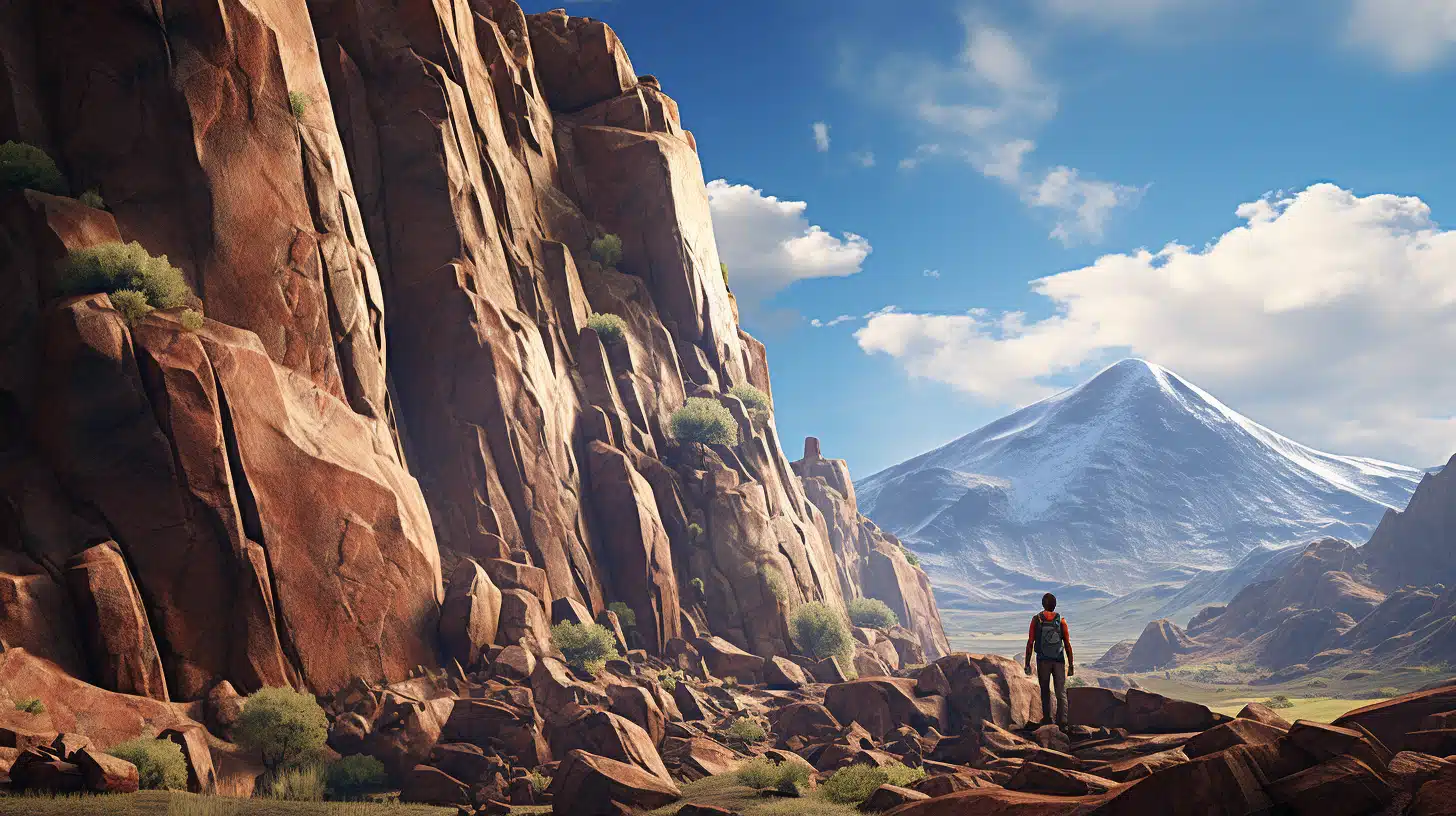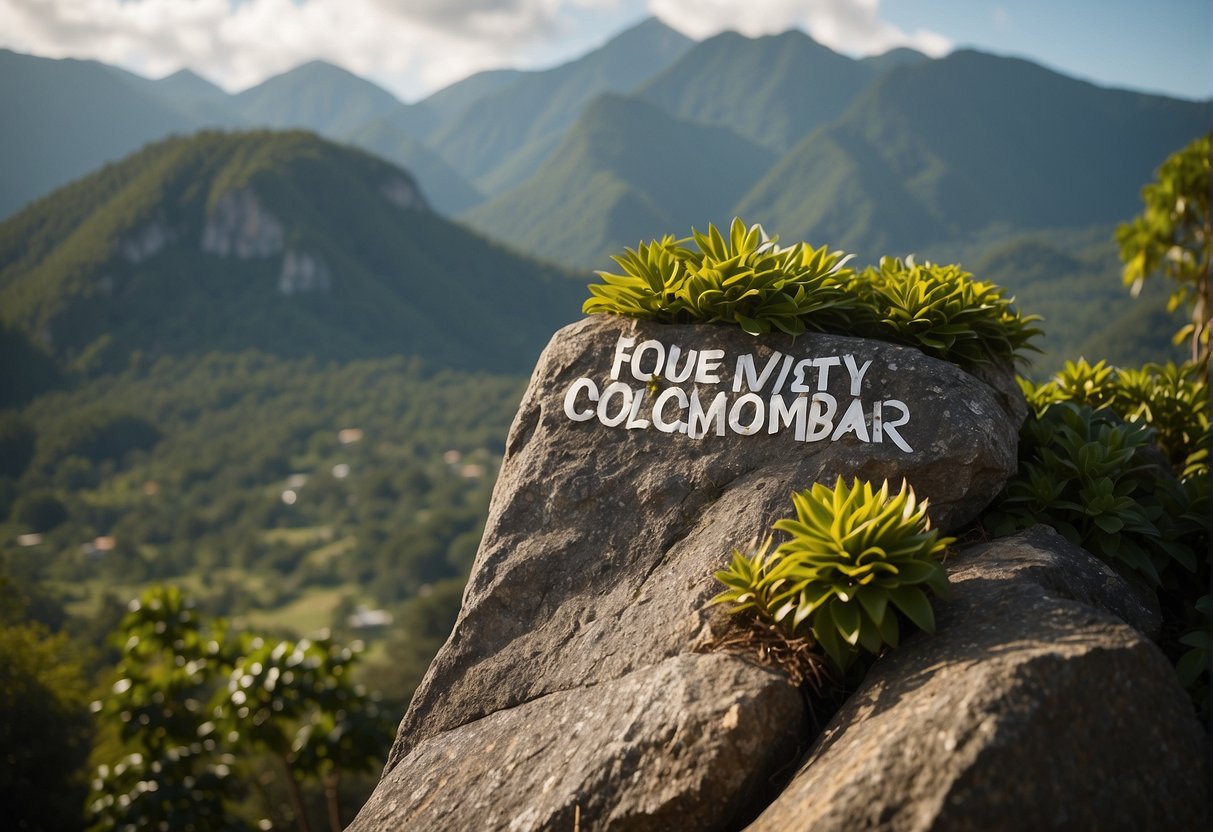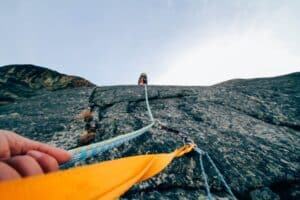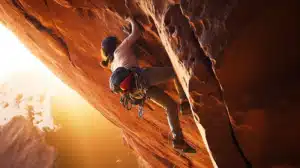Colombia’s diverse landscape offers a unique setting for rock climbing enthusiasts, with its rugged Andes mountains and hidden canyons, rock climbing Colombia will provide a challenging and scenic backdrop for climbers of all levels. The country’s climbing history is rich and continues to grow in popularity, drawing both local and international climbers to explore its vast and varied terrain. From the well-developed climbing routes in Suesca to the daunting boulders of El Peñol de Guatapé, the range of experiences caters to both beginners eager to learn the basics and seasoned veterans seeking to push their limits.
Understanding the basics of rock climbing is crucial before embarking on such adventures. The well-maintained Colombian climbing spots offer diverse routes that are classified according to an internationally recognized grading system, which assists climbers in selecting challenges that align with their skill set. Planning a climbing trip involves more than just evaluating difficulty levels; one must consider the climbing shops and services available, local guides, and the proximity of additional attractions that can enrich the travel experience.
Safety is paramount in rock climbing, and Colombia’s climbing community is committed to maintaining high safety standards, providing essential emergency information, and fostering environmental awareness among climbers. Engaging with the local community can greatly enhance the overall experience, offering insights into the culture and allowing for a deeper connection with the unique environment that Colombia presents to the climbing enthusiast.
Table of Contents
ToggleKey Takeaways
- Colombia offers a variety of rock climbing experiences with its rich geography and welcoming climbing community.
- Climbers should understand the grading system and prepare adequately to ensure a safe and enjoyable trip.
- Engaging with local communities and respecting environmental ethics are integral parts of rock climbing in Colombia.
History and Popularity of Rock Climbing Colombia
https://www.youtube.com/watch?v=uUrrOdzKB3Q&embed=true
In the heart of the Andes Mountains, the sport of rock climbing in Colombia has a significant history that both locals and international climbers admire. The climbing community can trace its roots back to Suesca, a small town that has been at the forefront of climbing in Colombia for over 70 years. With its proximity to the capital city of Bogotá, Suesca has become a hub for climbers and has earned the nickname “Colombia’s rock climbing Mecca” due to its abundant routes and history.
Suesca’s Role in Colombian Climbing:
- Establishment: Recognized as the birthplace of rock climbing in the country.
- Routes: Has over 400 documented routes, potentially nearing 600 with new developments.
- Development: Regularly sees new routes and maintenance, contributing to its popularity.
Colombia’s climbing spots offer a variety of terrain that caters to all skill levels, fostering a growing and vibrant climbing community. It’s not just the quantity but the quality of the climbing that has placed Colombia on the map. Enthusiasts find both challenging and accessible climbs, making it an inclusive environment for all climbers.
The sport’s popularity has surged in part due to Colombia’s diverse and scenic landscapes, which provide an impressive backdrop for climbing. The government and local organizations have taken steps to promote rock climbing as a part of ecotourism, which has helped to sustain and grow the sport.
The synergy between the climbing community and Colombia’s natural beauty has made it a favorite destination for climbers from around the world. This mutual respect ensures that the climbing areas are preserved and respected for future generations to enjoy.
Understanding Rock Climbing Basics

Before venturing into the vertical world of rock climbing in Colombia, it’s essential to understand the gear and techniques crucial for a safe and enjoyable experience. A climber must have the right equipment, and a solid grasp on climbing technique and safety practices.
Equipment and Gear
Harness: An essential piece of climbing gear, the harness is worn around the waist and thighs allowing climbers to attach themselves to safety ropes and hardware.
- Belay Device: A critical tool for controlling the rope during a climb, the belay device allows a partner to catch a climber’s fall, lower a climber, or ascend the rope.
- Helmet: Protects the climber’s head from falling debris and impacts during a fall.
- Climbing Shoes: Specially designed footwear that enhances grip on rock surfaces.
- Carabiners: Metal loops with spring-loaded gates; used to quickly and reversibly connect components.
Techniques and Safety
Technique: To climb efficiently, climbers must use a balance of strength and technique, utilizing holds and body positioning in a way that maximizes stability and minimizes energy expenditure.
- Body Positioning: Keeping the body’s center of gravity close to the rock and using legs for pushing upwards can conserve energy.
- Footwork: Precise foot placement and choosing the right holds are more important than upper body strength.
Safety: Climbing involves inherent risks, and safety should be a climber’s top priority.
- Communication: Clear and consistent communication between climbing partners is fundamental to prevent accidents.
- Belaying Technique: Proper belaying technique is crucial for catching falls and ensuring the climber’s rope is managed correctly.
- Regular Gear Checks: Routinely inspect gear for wear and damage, and replace it as necessary.
By adhering to these basics, climbers can focus on the routes and the unique challenges they offer, while minimizing risk.
Guide to Climbing Areas in Colombia
Colombia’s diverse landscapes offer a variety of rock climbing experiences, from the renowned sandstone cliffs of Suesca to the granite monoliths near Guatapé. Each climbing area has its unique charm and challenges that entice climbers from around the world.
Suesca
This is Colombia’s most famous crag and a cornerstone of the country’s climbing community. The nearly 2-kilometer-long sandstone cliff offers over 400 routes with a mix of sport and traditional climbing. The best time for climbing in Suesca is during the dry season, avoiding the rainy months for a safe and enjoyable experience.
La Mojarra
Perched above the Chicamocha Canyon, La Mojarra boasts impressive cliffs with excellent sport climbing opportunities. The crags here are recognized for their high-quality sandstone, and climbers can enjoy over 100 routes of varying difficulty, with stunning views of the canyon beneath.
Macheta
Macheta is esteemed for its long sport routes and overhanging caves that cater to climbers looking for an endurance challenge. The steepness and the length of the climbs in this area make it an exceptional spot for those looking to push their limits.
El Peñol and Guatapé
The iconic El Peñol is a must-visit for climbers seeking to experience the majestic granite outcrops that characterize the region. While many tourists climb the rock via a staircase, real climbing opportunities abound in the area, including some trad and even multi-pitch routes. Not far from this monolith is the picturesque town of Guatapé, an ideal base for climbers to explore the surrounding rock formations.
Climbing Routes and Grades
Climbers find a variety of routes and grades across Colombia, ranging from beginner-friendly pitches to expert-level ascents. Distinct climbing styles such as sport, trad, and multi-pitch are well-represented, with hundreds of routes to explore.
Sport Climbing
Colombia’s sport climbing scene boasts over 400 routes, with areas like Suesca offering a comprehensive array of difficulties and styles. Sport climbing routes here are known for their excellent quality of bolts and anchors, ensuring a safe climbing experience. La Mojarra, regarded as one of Colombia’s best sport climbing destinations, has routes that cater to intermediate and advanced climbers, making it a perfect spot for those looking to push their limits.
Trad Climbing
In contrast, trad climbers enjoy the rugged, untapped terrain of Colombia’s mountains, where traditional routes offer an immersive experience in nature. Over 300 routes of trad climbing are spread across the country, requiring climbers to place their own protection as they ascend. Colombia’s rock formations, especially in the Andes, provides an exceptional playground for those who prefer the trad climbing style, with a variety of cracks and flakes to navigate.
Multi-pitch Climbing
Colombia also offers a sublime multi-pitch experience, with some routes exceeding several hundred meters. Multi-pitch routes in the Andes mountain range combine endurance and strategy, as climbers tackle long ascents that may span the course of several hours or even a full day. Noteworthy multi-pitch climbs are found in places like El Peñol de Guatapé, where climbers are treated to stunning views and challenging pitches that test their proficiency in route finding and managing fatigue.
Planning Your Climbing Trip
When setting out for a rock climbing adventure in Colombia, it’s essential to consider the best season for the sport, understand the transportation and accommodation options available, and explore climbing tours and schools that cater to your needs.
Best Time to Visit
The most opportune time for rock climbing in Colombia is during the drier seasons, typically extending from December to March and July to August. During these periods, the weather conditions are more stable, ensuring safer and more enjoyable climbs.
Transportation and Accommodation
Travelers generally have a range of transportation options, from public buses to private transportation, to navigate between cities and climbing sites. For places like Suesca, the foremost climbing area in Colombia, it’s accessible through public transport from Bogotá. When considering where to stay, climbers can choose from local hostels to hotels, with options varying from basic to higher-end. Proximity to climbing locations is something to prioritize to maximize time spent on the rocks.
Climbing Tours and Schools
Rock climbing tours provide structured experiences, often inclusive of guides and necessary climbing gear. For beginners or those looking to enhance their skills, numerous climbing schools offer courses with qualified instructors. The town of Suesca not only has some of the best climbing in Colombia but also boasts reputable training centers for climbers of all levels.
Climbing Shops and Services
Colombia offers climbers a variety of shops and services catering to their specific needs. Climbers can find gear shops in major cities near climbing spots, providing essentials like ropes, harnesses, carabiners, and climbing shoes. Such shops often have knowledgeable staff who can provide advice on the best gear for local climbing conditions.
Gear Shops and Rentals
Many climbers may prefer to rent equipment rather than purchase it, especially if visiting. Rental services are commonly found at:
- Base camps near popular climbing areas
- Local climbing gyms
- Specialty outdoor retailers
Restaurants and Food Services
After a day of scaling walls, climbers can recharge at nearby restaurants offering local and international cuisine. Climbing spots like Suesca have nearby establishments where climbers can enjoy hearty meals and socialize with fellow enthusiasts.
Supplementary Services
For those looking to mix their climbing with other wellness activities, certain camps and shops offer yoga classes to help climbers unwind and improve their flexibility, which is crucial for climbing. The combination of rock climbing and yoga can enhance a climber’s balance and core strength.
Table of Services in Climbing Areas
| Service Type | Description |
|---|---|
| Gear Shops | Selling and renting climbing gear and equipment. |
| Base Camps | Providing information, guides, and accommodations. |
| Restaurants | Offering meals and space for climbers to relax. |
| Yoga Classes | Available in some camps for pre/post-climb sessions. |
Climbers should always check current availability and shop opening times, as these can vary seasonally and between locations.
Additional Activities and Attractions
While rock climbing in Colombia offers an adrenaline-pumping experience, travelers can also delve into an array of additional activities and attractions. From the thrilling rapids ideal for rafting to cultural side tours that capture the essence of Colombia, there’s no shortage of adventure and discovery.
Adventure Sports
Rafting: For those seeking aquatic thrills beyond the cliff faces, Colombia’s turbulent rivers provide the perfect setting for rafting. The waters here are renowned in South America, offering both challenging rapids for experienced thrill-seekers and gentler currents for novices.
- Beginners: Rio Bata offers an excellent start with manageable rapids and beautiful scenery.
- Advanced: The Rio Suarez provides high-octane rapids that are sure to get the heart racing.
Coffee Region Exploration: Adventurers can also take a respite from the rocks and immerse themselves in Colombia’s verdant coffee regions. Known as the Coffee Triangle, this area allows visitors to:
- Trek through lush coffee plantations
- Learn about coffee production
- Enjoy local coffee tastings
Cultural Sites
Historical Tours: Colombia’s rich history can be explored through its well-preserved cultural sites. Travelers can witness pre-Colombian history and colonial architecture, diving into a past that has shaped the modern face of this vibrant country.
- Cartagena’s Walled City: A fortress of significant historical value featuring cobblestone streets and colorful colonial buildings.
- San Agustin Archaeological Park: Home to fascinating ancient sculptures and relics in the southern region.
Cultural Side Tours: Beyond the historical landmarks, visitors can engage with Colombia’s contemporary culture through a variety of tours and activities that highlight the nation’s artistic and social diversity.
- Street Art Tours: Cities like Bogotá showcase a booming street art scene reflecting Colombia’s social narratives.
- Cultural Festivals: One can partake in vibrant festivals such as the Carnival of Barranquilla, showcasing a blend of indigenous, African, and European traditions.
Safety and Emergency Information
When planning to rock climb in Colombia, climbers should prioritize personal safety and be aware of emergency protocols. It is highly advised to have comprehensive travel insurance that covers not only medical expenses but also any evacuation or rescue operations associated with climbing accidents.
Personal Safety Gear
- Helmet: to protect from falling debris
- Harness: ensure it’s well-fitted
- Climbing shoes: for proper grip
- Chalk: to keep hands dry for a better grip
Climbing Precautions
- Always check the weather conditions before a climb
- Inspect personal gear for wear or damage
- Climb with a partner or group
- Communicate effectively with climbing partners
Emergency Contacts
Keep a list of emergency contacts, including:
- Local Mountain Rescue Services
- Nearby Hospitals
- Local Police
In case of an emergency, climbers should stay calm and contact local authorities immediately. If access to a phone is unavailable, employ standard mountain distress signals.
Climbing Insurance
Ensure that your travel insurance includes:
- Emergency Evacuation: Covers costs if you need to be airlifted to a hospital.
- Medical Treatment: For injuries sustained while climbing.
- Gear Loss or Theft: In case personal climbing equipment is lost or stolen.
Carry proof of your insurance with you and have a clear understanding of how to claim and what you’re covered for. Most importantly, climbers should remember that the best safety measure is prevention through careful planning and constant awareness of their environment.
Rock Climbing and the Local Community
In Colombia, rock climbing activities have woven themselves into the social and economic fabric of several local communities. Notably, places like Suesca, a small town north of Bogotá, have a longstanding relationship with climbing. As such, Suesca is often referred to as the epicenter of Colombian rock climbing, attracting both national and international climbers.
Local businesses in climbing spots like La Mojarra thrive by providing services tailored to climbers’ needs, which has helped in the town’s development. Here, the economic impact of climbing is evident as the community hosts climbers, with businesses ranging from hostels like El Refugio to climbing gear shops.
Cultural exchange is a significant aspect of rock climbing in Colombia. Climbers from around the world bring diverse perspectives and experiences, engaging with the locals, and sharing skills and stories. This interaction promotes a cultural blend that enriches the local scene.
The climbing community itself is active in maintaining and respecting the natural climbing areas. Efforts from groups such as Colombia Rafting exemplify a commitment to safety and environmental stewardship, reinforcing the responsible use of these outdoor spaces. Volunteer initiatives often lead the way in trail maintenance and route setting, highlighting the climbers’ dedication to their sport and its sustainable practice within their environment.
By integrating climbing with local culture and economy, these areas of Colombia highlight the symbiotic relationship between the sport and the local community. The climbing scene in Colombia is not only about the sport but also about the people and the mutual growth and respect fostered through this shared passion.
Environmental Considerations and Ethics
When engaging in rock climbing in Colombia, climbers confront various environmental considerations. It is critical to recognize the impact that climbing can have on the natural landscape, which ranges from soil erosion to vegetation damage. Ethical practices, such as minimizing chalk usage, become important in reducing visual pollution and preserving the natural state of the rocks.
Conservation efforts can be seen in action through:
- The adherence to ‘Leave No Trace’ principles
- Using established trails to prevent new path creation
- Avoiding climbing in restricted areas to protect wildlife habitats
Climbing ethics in Colombia also dictate one’s interaction with the local communities. It involves:
- Respecting local customs and access provisions
- Participating in efforts to maintain climbing areas
Climbers should stay informed about the environmental challenges specific to Colombia’s climbing locations. For example, the guide to rock climbing in Colombia includes pertinent information about local crags and how to enjoy them responsibly.
Key Ethical Actions Include:
- Educate: Learn about the local flora and fauna to avoid disturbing the ecosystem.
- Contribute: Support local conservation initiatives either financially or through volunteering.
- Advocate: Promote sustainable climbing practices within the climbing community.
Through conscientious climbing and adherence to ethical standards, individuals can help ensure that the exquisite climbing environments throughout Colombia are preserved for future generations.
Personal Stories and Experiences
In Colombia, rock climbing enthusiasts often share their experiences with a sense of pride and reverence for the sport and the scenic beauty of the country. One traveler recounts a day of rock climbing in Suesca, describing it as a memorable adventure. The towering cliffs and incredible vistas provided a backdrop for a thrilling vertical challenge and a sense of accomplishment upon reaching new heights.
Another narrative involves a photographer, Camila Ospina, who combines her passion for climbing with her love for photography. Her expeditions through Colombia’s rugged landscapes serve as both a physical journey and an artistic endeavor, capturing the essence of the climbing experience through her lens.
Climbers also share their accounts of the full-day climbing tours offered in Suesca, revealing how such experiences are not only about the climb but also about the community and connection found among fellow climbers.
- Memorable Climbs:
- Suesca Outdoor Experience – celebrated for its rock formations and accessible routes.
- Guatape’s Famous Rock – notable for its height and panoramic views.
| Personal Impact | Description |
|---|---|
| Achievement | Climbers express a deep sense of accomplishment after conquering challenging routes. |
| Connection | Stories often highlight the camaraderie and friendships developed through shared adventures. |
| Artistic Inspiration | Personal accounts from climbing photographers like Camila Ospina show the creative inspiration that the sport can evoke. |
These personal testimonials convey a genuine passion for rock climbing in Colombia and serve as a testament to the transformative power of the sport. Each climber’s account adds a thread to the rich tapestry of Colombia’s outdoor climbing culture.
Frequently Asked Questions
Colombia offers diverse rock climbing locations that cater to various skill levels, each with its own unique characteristics and optimal seasons for climbing. Safety-conscious climbers can also engage certified guides for their adventures.
What are the top destinations for rock climbing in Colombia?
Colombia’s landscape provides several top destinations for rock climbing, including Suesca in Cundinamarca, known as the country’s most developed climbing area. Other popular spots are Macheta, Zipa, El Peñol de Guatapé, and La Peña de Abejorral, showcasing a range of climbing styles from sport routes to traditional climbs.
Which location offers the most challenging climbing routes in Colombia?
The Púlpito del Diablo in El Cocuy National Park is renowned for featuring some of the most challenging climbing routes. Experienced climbers are drawn to this destination for its impressive rock formation and the demanding ascent it provides.
Can beginners find suitable climbing spots in Colombia, and if so, where?
Yes, beginners can find suitable climbing spots in several locations across Colombia. Bogotá’s nearby crag, Zipa, offers a variety of routes that are ideal for those new to the sport. Additionally, rock climbing outfitters often provide beginner-friendly tours tailored to those looking to learn the basics in a safe environment.
What is the best time of year to go rock climbing in Colombia?
The best time for rock climbing in Colombia varies by region due to the country’s climate diversity. However, the dry seasons, generally from December to early March and July to August, are considered ideal for climbing, providing more favorable conditions and less likelihood of rain.
Are there certified guides available for rock climbing tours in Colombia?
There are certified guides available for rock climbing tours in Colombia, particularly through organizations like Colombia Rafting that are very safety conscious. These guides often offer customizable itineraries and authentic experiences tailored to the climbers’ needs.
What kind of climbing gear is recommended for climbs in Colombian crags?
For climbs in Colombian crags, climbers are recommended to have essential gear such as climbing shoes, a helmet, harness, carabiners, quickdraws, and a rope. It is also advisable to carry personal safety equipment and a first aid kit, regardless of climbing difficulty or location.




















